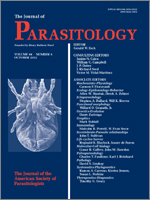Isolation of a specific Ancylostoma species typically requires death of the source animal, or holding an animal long enough to collect feces after treatment, for worm recovery and identification. The reason for collecting worms is that the eggs are not easy to distinguish morphologically. In keeping with the 3 Rs of laboratory animal research (reduction, refinement, replacement), the objective of this study was to obtain an isolate of Ancylostoma braziliense from 1-time field-collected samples of canine feces without the need for killing the host. During a collection trip to Florida, fecal samples (n = 148) were collected and identified as containing eggs of Ancylostoma species (n = 64) using centrifugal sugar flotation. Eggs from hookworm-positive slides were washed into tubes, DNA was extracted, and 2 samples were identified as A. braziliense using restriction fragment length polymorphism (RFLP) with Hinf1. Larval cultures were initiated from these samples, and larvae from the cultures were returned to New York and used to inoculate a purpose-bred kitten with the goal of inhibiting the growth of any contaminating Ancylostoma caninum that might be present in the culture. The infection was patent at 15 days, and eggs were identified as A. braziliense by RFLP and DNA sequencing. Using forceps during endoscopy, 2 adult worms (1 male, 1 female) were recovered from the cat and identified morphologically as A. braziliense. Larvae were cultured from the feces of this cat and used to infect a laboratory-reared beagle dog. Additionally, worms recovered from the feces of the cat post-treatment were confirmed to be A. braziliense, except for 1 female A. caninum containing infertile eggs. The dog (patent 14 days post-infection) was also infected with A. braziliense as determined by RFLP and DNA sequencing of eggs and cultured larvae. Both the cat and dog were treated, verified to be no longer shedding eggs, and then placed into adoptive homes.
How to translate text using browser tools
1 October 2012
Obtaining an Isolate of Ancylostoma braziliense From Dogs Without the Need for Necropsy
Janice L. Liotta,
Alice C. Y. Lee,
Sarp Aksel,
Ibrahim Alkhalife,
Alejandro Cruz-Reyes,
HeeJeong Youn,
Stephen E. Bienhoff,
Dwight D. Bowman
ACCESS THE FULL ARTICLE

Journal of Parasitology
Vol. 98 • No. 5
October 2012
Vol. 98 • No. 5
October 2012




